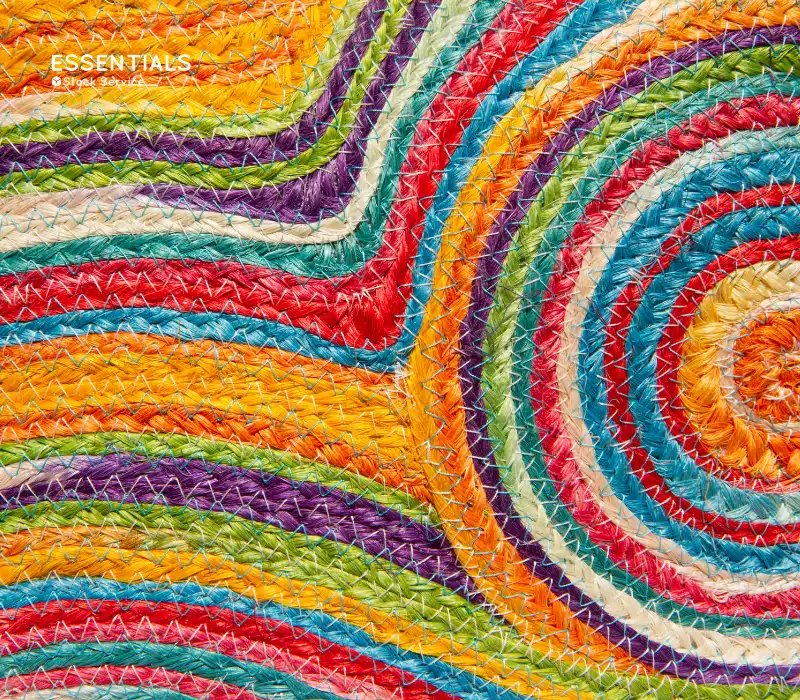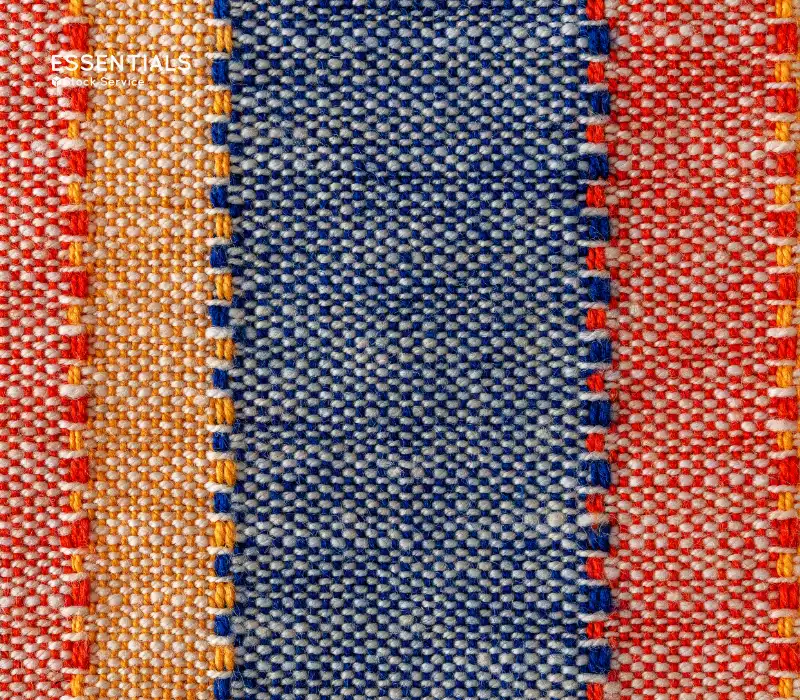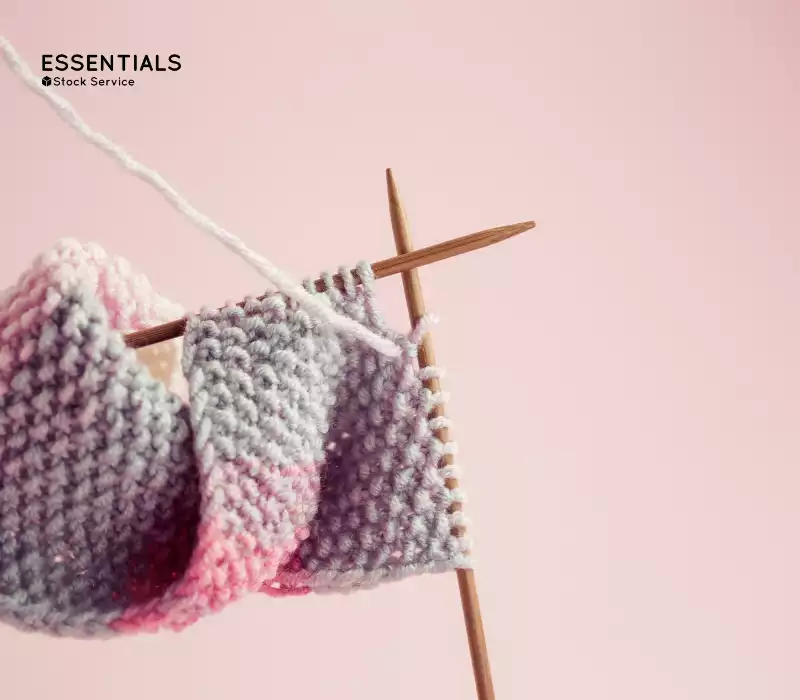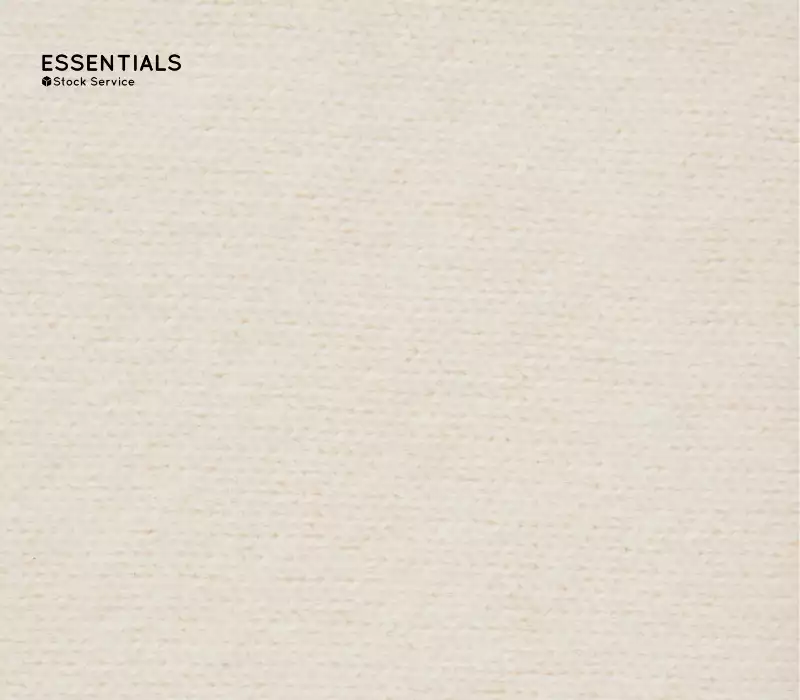Each choice of fabric structure and fiber is a decision that defines the character of a garment. At ESSENTIAL STOCK SERVICE, we understand that behind every project lies a specific need.
That’s why today we’re exploring the differences between woven fabrics and knit fabrics, and how choosing the right yarn can transform your design into a functional, aesthetic, and durable creation.
What Does It Mean to Weave Flat?
Flat weaving involves creating a fabric by interlacing two systems of yarns: the warp (longitudinal threads) and the weft (transverse threads).
This method is performed on industrial or manual looms and results in a firm, stable, and resistant fabric structure.
This type of fabric is ideal for outerwear, upholstery, shirting, trousers, curtains, and products that require defined shapes.
Its rigidity allows precise cuts and clean finishes, making it the foundation for many fashion collections and technical textiles.
At Essentials, we know that versatility is key when it comes to design. That’s why we offer yarns that adapt seamlessly to different structures, knitwear and woven fabrics alike, providing creative freedom without compromising performance or aesthetics.
A perfect example is Alpaloop 5, made of 89% superfine alpaca and 11% recycled polyamide, ideal for both types of construction. Its fluffy texture and defined body allow for everything from garments with flow and movement to flat pieces with volume, durability, and a sustainable purpose.
What Does a “Point” Mean in Flat Weaving?
In woven fabric, a “point” refers to the weave pattern, the way warp and weft threads interlace. It’s the minimal unit of interaction between those threads.
For example, plain weave (1/1 interlacing) is the simplest and most compact, while twill and satin weaves offer richer textures and visual appeal.
Each weave defines the look, behavior, and application of the fabric. Tighter weaves result in denser, more durable fabrics; looser ones offer greater flexibility and drape.
What Types of Fabrics Exist?
Fabrics are classified according to their structure:
- Woven fabrics: made by interlacing warp and weft. Examples include plain weave, twill, satin, denim, linen, gabardine.
- Knit fabrics: made by interlocking loops of a single thread. Examples include jersey, fleece, tricot, raschel.
Each type has unique properties tailored to different design, functional, and aesthetic needs.
For those seeking fluidity, luxury, and lightness in knitwear, TRILOGY offers a unique synergy of softness, sheen, and warmth. Its blend of 54% baby alpaca, 22% super kid mohair, and 24% mulberry silk, allows the creation of garments that feel enveloping, delicate to the touch, and naturally graceful in their drape. At Essentials, TRILOGY is an invitation to explore the most sensorial side of textile artistry.
What’s the Difference Between Woven and Knit Fabrics?
Woven fabrics offer greater resistance and shape definition, while knit fabrics better conform to the body and allow for movement.
Which Is More Elastic?
Knit fabric is naturally more elastic due to its looped construction. This elasticity allows garments to fit the body without sacrificing comfort. In contrast, woven fabric has low elasticity unless blended with fibers like elastane.
This distinction is essential for functional design: sportswear, underwear, and casual wear often use knits, while structured garments like blazers, trousers, or shirts rely on woven fabric.
Conclusion: Which One Do You Need?
Choosing between woven and knit fabrics isn’t about competition, it’s about purpose. If you value structure, durability, and definition, woven fabric is your best ally. If you prioritize elasticity, comfort, and fluidity, knit fabric is your match.
The key is understanding how each structure serves your design. And if you choose raw yarns, you’re embracing a more conscious, flexible, and personal approach to fashion.







